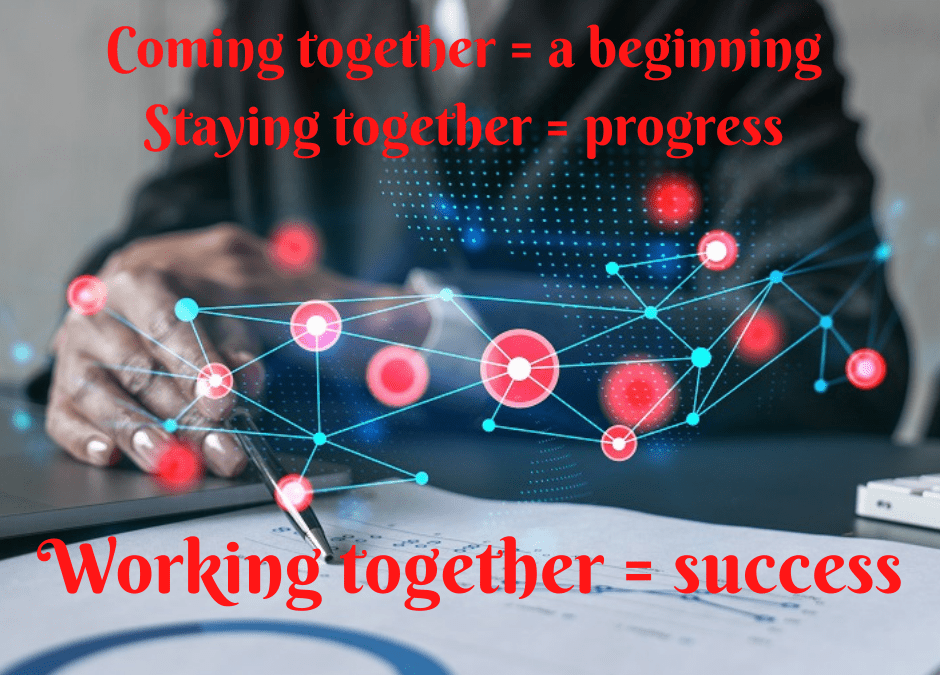Cooperation becomes particularly challenging when people involved pursuing different goals. One area in which precisely this happens time and again in companies is the interface between sales and (project) implementation. I have often observed here that in organisations – consciously as well as unconsciously – framework conditions with contradictory goals have been created.
An example – Solution Sales
Let us take a closer look at an example. This is a medium-sized IT company. Its core business is IT solutions, which are assembled from standard components according to customer requirements. The company is project-oriented. An essential key figure in the company is the project margin, i.e. the profit contribution of an individual project. The project costs are always made up of a product share (the costs for the standard components) and a service share (e.g. for commissioning or customer-specific adaptation of the standard features). While the product costs are straightforward to calculate, the opposite is true for the service share.
Pulling together in the same direction?
The objective in sales is obvious: Sell! Sales employees are strongly incentivised, i.e. their salary depends to about 50% on individual sales success (turnover).
Although employees in project implementation are also incentivised, the variable salary component is much lower at around 10%. This is because several employees are usually involved in the performance and the individual share in the project success is much more challenging to measure than in sales. The most important key figure for the project implementation department is the project margin – and thus the adherence to the calculated costs of the service share – i.e. the values that were calculated when the order was placed.
You may now ask yourself: All right – but where is the contradiction in the objectives? Well – for sales, one of the most important sales arguments is, of course, the price. And this depends in no small extent on the service share – i.e. the sum of the calculated hours.
And this is precisely where you find the contradictory objective: The sales department has the goal of selling a lot – and for this, it needs low prices. The project implementation has the purpose of keeping the calculated costs – that is why project risks are considered in the calculation with surcharges that drive up the price. Complex, challenging solutions often have a very high chance – e.g. when new products are used with which the employees have little experience.
This game has natural limits: If too high-risk surcharges are considered, the price becomes too high, and the customer does not buy (or buys somewhere else). If no or similarly low-risk premiums are calculated, and the implementation is more complicated than planned, the project quickly slides into the red.
Organizational Dynamics
In the company I have described, these conditions have led to a subtle “enmity” between sales and project implementation, which has developed over many years. Some quotes I have heard again and again in the company:
Statements from sales staff in the direction of project implementation:
- “If you take so long to implement, I can’t sell anything at all. “
- “We lost the last contract to our competitor XYZ, because the project implementers there are much better than you.
- “Because you are so inflexible in project implementation, I am not achieving my sales targets and earn 30% less than last year. “
Statements from employees in project implementation towards sales:
- “Salespeople only have the maximisation of their salary in mind and not what is best for the company. “
- “The main thing is to sell and throw it over the fence – if we kill ourselves in the process, you don’t care. “
- “You tell the customer what he wants to hear instead of giving him good advice and selling him what he needs. When it comes to implementation, he is then not satisfied with what he gets. “
This list could be continued endlessly. The individual points of view are also understandable and comprehensible. The professional and personal cooperation was extremely poor and characterised by “tricks” to improve one’s position while at the same time, looking suitable for the management. Of course, this also had a massive impact on the customers. Often the customer was even instrumentalised by one side to “get one over on the other”.
Agile Transformation
The situation changed when a new managing director joined the company and quickly recognised the problem. A transformation project was set up to increase project quality and customer satisfaction. The lack of cooperation between sales and project implementation was quickly identified as one of the biggest levers for this.
In a series of workshops, the past was reviewed, and new internal processes were developed with the involvement of all those involved, based on agile principles and methods.
The biggest challenge was to change the employees’ inner attitude and attitude towards colleagues from the other department and to rebuild mutual trust. An important measure to achieve this was to change the incentive model in such a way that the joint success is more important than individual success.
The transformation process gained momentum after the first positive experiences with the new procedures were gathered. Regular joint “reviews” of cooperation and internal functions were an essential contribution to this. The focus was always placed on what had already been achieved to make successes visible.
As often observed in such situations, some employees have adapted more quickly to the new position. Others have found it more challenging to give up familiar patterns and “enemy images”.
Ultimately, the transformation has led to a significant improvement in the cooperation between sales and project implementation and thus to better project quality and customer satisfaction. Things are still not running smoothly – but then life would be boring.


Recent Comments